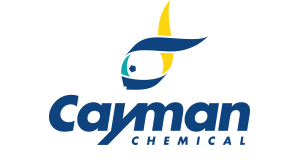Azadiradione, CAS 26241-51-0
Azadiradione, CAS 26241-51-0
SKU
CAY37063-1
Packaging Unit
1 mg
Manufacturer
Cayman Chemical
Availability:
loading...
Price is loading...
Shelf life (days): 1460.0
Formulation: A solid
Formal Name: (5a,7a,13a,17a)-7-(acetyloxy)-21,23-epoxy-4,4,8-trimethyl-24-norchola-1,14,20,22-tetraene-3,16-dione
Purity: ≥98%
Formula Markup: C28H34O5
Formula Weight: 450.6
CAS Number: 26241-51-0
Notes: Azadiradione is a limonoid that has been found in A. indica and has diverse biological activities.{66843,66844,46671,66845,66846} It inhibits heparin-induced tau aggregation by 54.2% in a cell-free assay when used at a concentration of 400 µM.{66844} Azadiradione inhibits the tautomerase activity of human, P. falciparum, and P. yoelii migration inhibitory factor (MIF; IC50s = 35.2, 45.6, and 43 µM, respectively).{66843} It is cytotoxic to HL-60 leukemia and SK-BR-3 breast cancer cells (IC50s = 14.7 and 15.9 µM, respectively) but not A549 lung, AZ-521 stomach, or CRL-1579 melanoma cells (IC50s = >20 µM for all).{46671} Azadiradione (10 mg/kg) decreases the mutant huntingtin aggregate load in the cortex, striatum, and hippocampus, improves motor function, and increases lifespan in the R6/2 transgenic mouse model of Huntington’s disease.{66845} It increases the levels of heat shock factor 1 (Hsf1), heat shock protein 70 (Hsp70), and ubiquitin-protein ligase E3A (Ube3a) in the mouse cortex and striatum in the same model. Azadiradione (10 mg/kg) also reduces blood glucose levels and α-amylase activity, as well as serum triglyceride and HDL levels, in a rat model of diabetes induced by streptozotocin (Item No. 13104).{66846}
Formulation: A solid
Formal Name: (5a,7a,13a,17a)-7-(acetyloxy)-21,23-epoxy-4,4,8-trimethyl-24-norchola-1,14,20,22-tetraene-3,16-dione
Purity: ≥98%
Formula Markup: C28H34O5
Formula Weight: 450.6
CAS Number: 26241-51-0
Notes: Azadiradione is a limonoid that has been found in A. indica and has diverse biological activities.{66843,66844,46671,66845,66846} It inhibits heparin-induced tau aggregation by 54.2% in a cell-free assay when used at a concentration of 400 µM.{66844} Azadiradione inhibits the tautomerase activity of human, P. falciparum, and P. yoelii migration inhibitory factor (MIF; IC50s = 35.2, 45.6, and 43 µM, respectively).{66843} It is cytotoxic to HL-60 leukemia and SK-BR-3 breast cancer cells (IC50s = 14.7 and 15.9 µM, respectively) but not A549 lung, AZ-521 stomach, or CRL-1579 melanoma cells (IC50s = >20 µM for all).{46671} Azadiradione (10 mg/kg) decreases the mutant huntingtin aggregate load in the cortex, striatum, and hippocampus, improves motor function, and increases lifespan in the R6/2 transgenic mouse model of Huntington’s disease.{66845} It increases the levels of heat shock factor 1 (Hsf1), heat shock protein 70 (Hsp70), and ubiquitin-protein ligase E3A (Ube3a) in the mouse cortex and striatum in the same model. Azadiradione (10 mg/kg) also reduces blood glucose levels and α-amylase activity, as well as serum triglyceride and HDL levels, in a rat model of diabetes induced by streptozotocin (Item No. 13104).{66846}

 Deutsch
Deutsch










